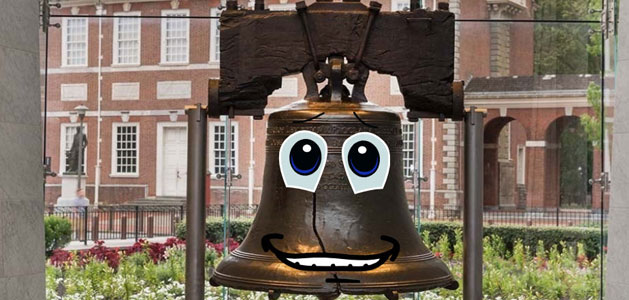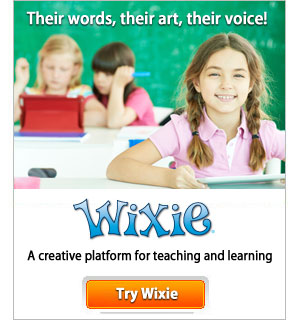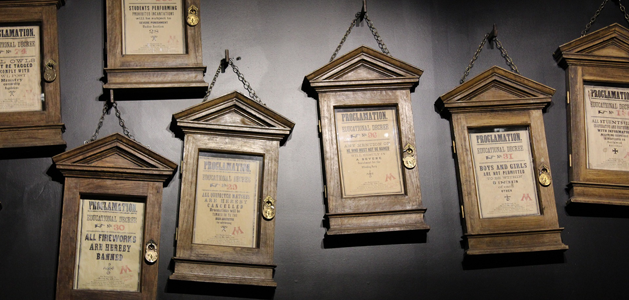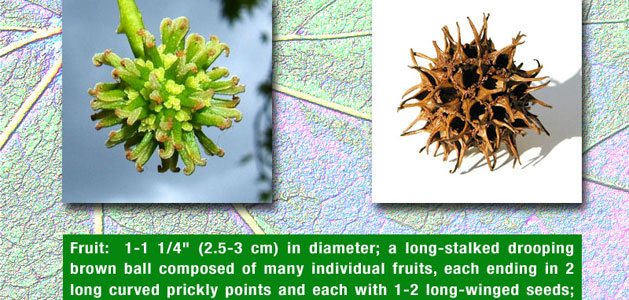US Symbol Stories
Students tell the story of a US symbol from its perspective.

Task
Have you ever looked at your dog or cat and tried to figure out what they are thinking? This is called personification. After learning about important US symbols, you will become one of the symbols and share information about the history of the symbol and its importance.
Engage
Show your students symbols such as a heart or a skull and crossbones. Ask students to describe what they symbols look like and then tell you what they mean (love, poison danger, peace).

Ask your class if they can find or name other symbols in the world around them. After students identify a symbol, ask them to talk about what the symbol means or represents. The goal is to get students to understand that we use visual symbols to represent ideas and communicate these ideas quickly.
Introduce students to important symbols in the United States, such as:
Use books, videos, and other resources with your students to help them identify a range of ways they can learn new information.
Create a word wall to help students identify and learn terms connected to their exploration. Depending on the age of your learners, your wall might include words like arch, statue, monument, freedom, and strength.
Create
Read Norman Pearl’s The Great Seal of the United States. In this story, Ben Franklin tells the story of the Great Seal. After reading, and learning about the Great Seal, as well as a bit about the narrator, Benjamin Franklin, ask your students to imagine what the seal might have thought about Ben Franklin and the process it took to create the seal.
Assign a US symbol you have studied to each student in your class. Choose symbols you think will be of interest to each unique learner, as well as how accessible the information is to each student’s emerging reading level.
Have students complete an Empathy Map that shows what their symbol sees, hears, thinks, and feels.
When empathy maps are complete, it is time to begin telling their story.
Give students paper and crayons or a digital tool like Wixie and ask them to draw a picture of the symbol and write a story about it.
Depending on the age of your students, you may want to use sentence starters to support their writing, such as:
- “I am the __________________ (symbol).”
- “I represent ___________.”
- “When people see me, they think of _________.”
Refer back to words you collected earlier like freedom, strength, independence, and equality.
Share
When work is done, celebrate learning and also take time to solidify and reflect on it. If learners have created a single page, display the pages in a US Symbols gallery. Print student work if you are creating a gallery in the classroom or collect them into a digital gallery on your classroom web page.
If students have created multiple pages, print their work as a booklet they can read on their own to build fluency. Tools like Wixie have built-in print options to print four pages of a project onto one sheet of paper, making it easy to fold into a booklet students can read and share with family and classmates.
If you are using Wixie, you can combine individual student pages together to form a class resource you can print, export to PDF, or embed or on your classroom web page.
If a student has included voice recording on their page, sharing the URL to the online version(s) means viewers can both read and listen to the story. You can also export the class book as an eBook, so students can read and enjoy on their iPads at home.
Assessment
Use the contents of each student's empathy map to have specific conversations with each learner about what their symbol might see, hear, feel and think. Have a conversation with each student to make sure the information they have found is accurate for their symbol as well as the meaning it portrays.
The final stories are great learning artifacts you can use as summative assessments, but the conversations you have during the process will provide a more complete picture of their learning. Ask students to explain their writing and illustrations as they are working. Prompt with questions about their story to encourage them to write and draw more detailed information.
If you aren’t face-to-face, take advantage of digital feedback options to motivate and support learners. Each student’s voice narration will give you insight into oral proficiency and reading fluency.
Resources
Melissa Ann Ferguson. American Symbols: What You Need to Know ISBN: 1515781275
Norman Pearl. The Great Seal of the United States ISBN: 1404822208
Library of Congress - Symbols of the United States
BrainPOP Jr. - US Symbols
Standards
Common Core State Standards
CCSS.ELA-LITERACY.RI.K.7
With prompting and support, describe the relationship between illustrations and the text in which they appear (e.g., what person, place, thing, or idea in the text an illustration depicts).
CCSS.ELA-LITERACY.RI.1.6
Distinguish between information provided by pictures or other illustrations and information provided by the words in a text.
ISTE Standards for Students
3. Knowledge Constructor
Students critically curate a variety of resources using digital tools to construct knowledge, produce creative artifacts and make meaningful learning experiences for themselves and others. Students:
b. evaluate the accuracy, perspective, credibility and relevance of information, media, data or other resources.
c. curate information from digital resources using a variety of tools and methods to create collections of artifacts that demonstrate meaningful connections or conclusions.
6. Creative Communicator
Students communicate clearly and express themselves creatively for a variety of purposes using the platforms, tools, styles, formats and digital media appropriate to their goals. Students:
a. choose the appropriate platforms and tools for meeting the desired objectives of their creation or communication.
b. create original works or responsibly repurpose or remix digital resources into new creations.
d. publish or present content that customizes the message and medium for their intended audiences.













